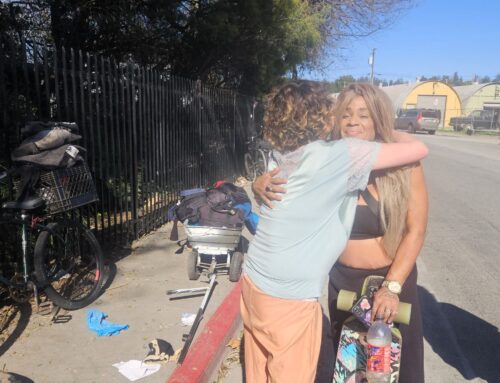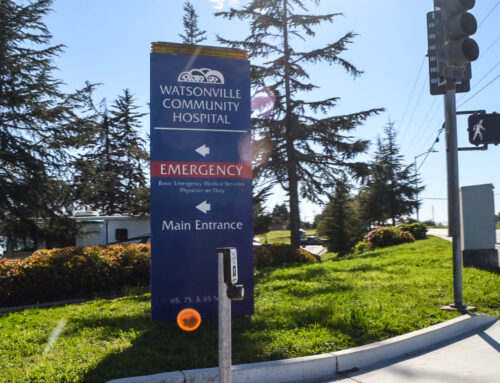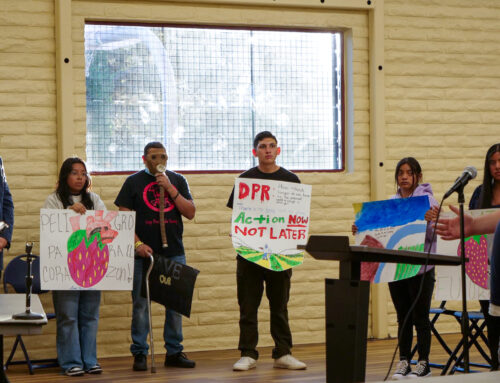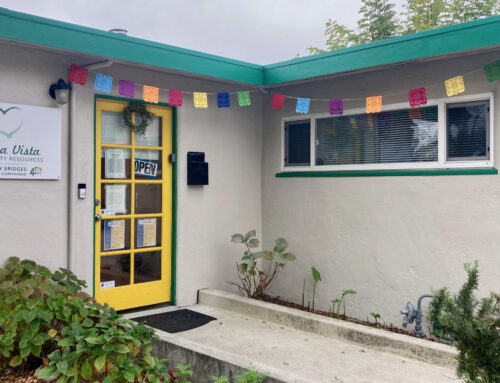In this edition of COVID Q&A, we press Santa Cruz County Deputy Health Officer Dr. David Ghilarducci with your questions.
Ghilarducci answered questions from reporters at a news conference Thursday at the county health services agency’s Emeline Avenue campus in Santa Cruz.
Question from Marm Kilpatrick, a UC Santa Cruz professor who models infectious diseases: Are hospitals still taking in the same type of COVID patients? Or are they taking milder cases now that they have the capacity?
DR. DAVID GHILARDUCCI: Their threshold for admission from my understanding has not really changed. We never got to the stage where we had to ration hospital beds in the county, unlike, say other places like New York. So that was very important. And we wanted to avoid that. So their criteria for admission really has not shifted based on the prevalence of disease right now.
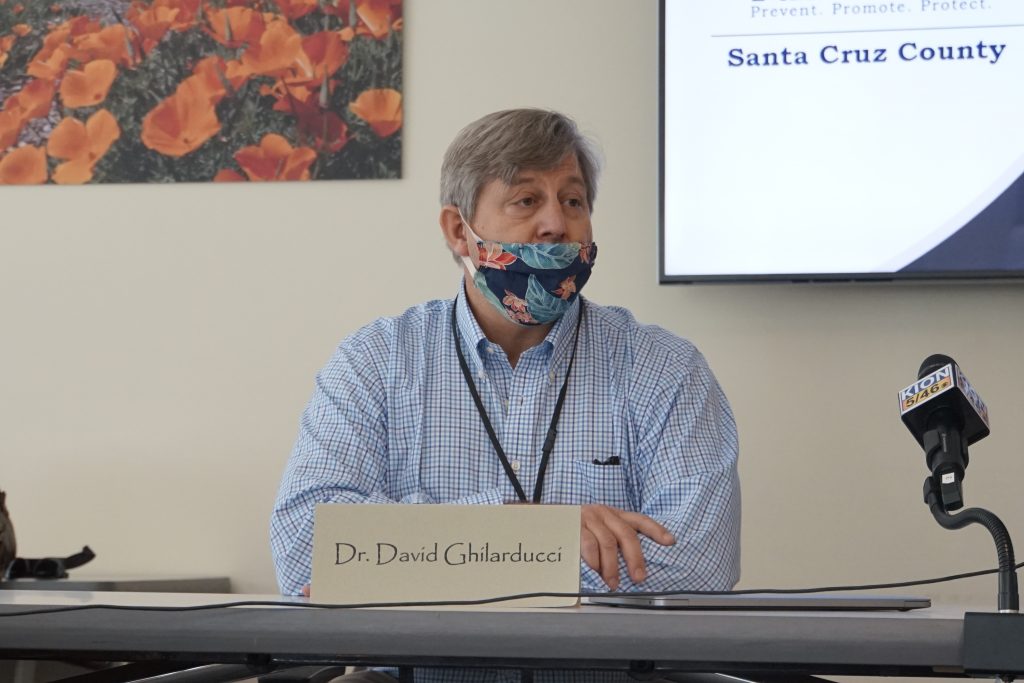
KARA MEYBERG GUZMAN: Which is, stay away unless your symptoms are very severe?
GHILARDUCCI: Yeah, you know, I wouldn’t say ‘very severe.’ But one of the things we notice about this virus — and it’s very strange — is that there are folks, we call them the ‘happy hypoxic.’ And this idea is that they can be sitting at home with very low oxygen saturation levels — levels that normally we would expect somebody to show some symptoms.
And what we’ve found is that some of these folks did compensate or get worse much faster than we would otherwise expect.
So what we ask is to have a relatively low threshold for seeking care. If you’re feeling any tightness in your chest, any shortness of breath, if you’re a little bit out of breath, like just walking up a few steps, those are all indicators of a possibly more serious kind of progression of the illness.
And the earlier you seek care in those cases, the better. So I would recommend to people to maybe do a little mini stress test at home. Do a couple of jumping jacks and see how you feel. If you’re significantly short of breath, that may be an indicator that you may be a little bit more perilous than you think.
We also emailed the same question to Dr. Larry DeGhetaldi, president of Santa Cruz division of Sutter Health Palo Alto Medical Foundation.
DeGhetaldi’s response: “I think that we are lowering a little our threshold to hospitalize. We want to get ahead of the rapid clinical decline seen in some patients.”
Another question from Marm Kilpatrick: Have testing criteria changed now that testing capacity has increased?
DR. GHILARDUCCI: Early on, we had very restrictive criteria in order to get tested. I would get calls in the middle of night from the hospital saying, ‘Well, I’ve got this patient that has this and this.’ And I would look at the CDC list and say yes or no about testing. Fortunately, those days are behind us.
And as the capacity builds, this is the way I sort of frame it is — up until now all of our testing has been relatively passive, meaning patients had to come forward and present and get tested.
And we’re moving now into a surveillance mode, which means that we’re going to actively test especially our most vulnerable populations. Those in our skilled nursing facilities, our first responders, and healthcare workers — we’re actually going to put them on a testing regimen, meaning that every 14 days they get retested whether they have symptoms or not.
And we realize that the yield of a test on an asymptomatic patient or person is much lower and there’s a propensity for false negatives in that situation. But nevertheless, it does give us more data on which to build our models and understand when we might be seeing an uptake in cases. So it’s about understanding the prevalence or the amount of disease in the community.
A question from an anonymous listener: Why does the county wait until five COVID cases are in each city to release data on the case breakdown by city? Where does the threshold of five come from?
GHILARDUCCI: This is not a scientific number. But the intent here is not to, if you have such a small number of cases and you release the location specific, then somebody could figure out ‘Oh, that must be Joe down the street.’ And we wanted to avoid that situation. So we felt that if we had at least five, then it becomes less personally identifiable
KMG: So it didn’t have a legal reason? There wasn’t like a legal privacy reason?
GHILARDUCCI: In general terms, but the number itself was a judgment call.
JASON HOPPIN, Santa Cruz County spokesman: Remember, we had that unfortunate situation with one of our early cases, which informed how we’re handling this. Where she was getting threats, and things like that.
Question from Elliot Dembner: Why is there a possible second wave of COVID cases forecasted for the fall?
GHILARDUCCI: We don’t really know why viruses are more common in the winter, to be honest with you. People think oh, you go out in the cold without a sweater, you’re going to catch a cold. But there’s really actually no, not a whole lot of, evidence of that.
In the wintertime though, the air tends to be drier. Your nasal membranes dry out and you might be more susceptible to infection.
But probably the most important factor is that people gather indoors. And so that any virus that happens to be there is more likely to spread apart. And so we see this every year with flu. And you know, as an emergency physician, every January, February, March, I think to myself, this is a little ‘mini-pandemic’ that we have for every year. And our ERs get overwhelmed.
And it’s remarkable to me because we have a vaccine for this particular virus.
And so, if we have a surge in flu and we have a surge in coronavirus at the same time, it will likely overwhelm our hospital systems and will lead to far more deaths not just from those viruses but from all other medical conditions that get squeezed out by that situation.
Submit your questions on the coronavirus in our survey or by email to [email protected]. We answer your questions in our newsletter, our podcast and our website stories.
Kara Meyberg Guzman is the CEO and co-founder of Santa Cruz Local. Prior to Santa Cruz Local, she served as the Santa Cruz Sentinel’s managing editor. She has a biology degree from Stanford University and lives in Santa Cruz.


